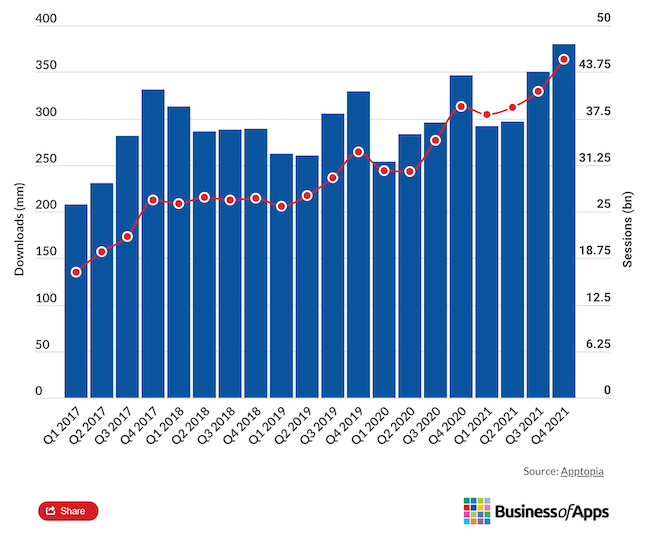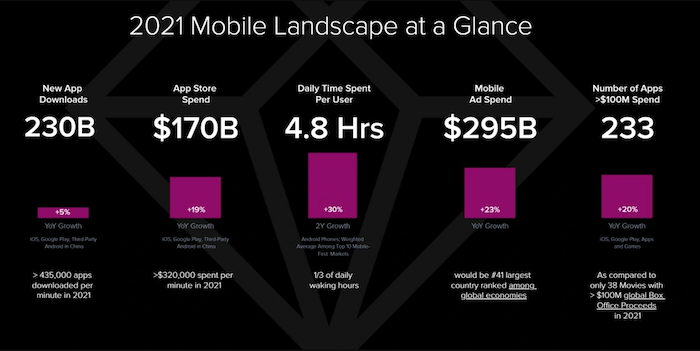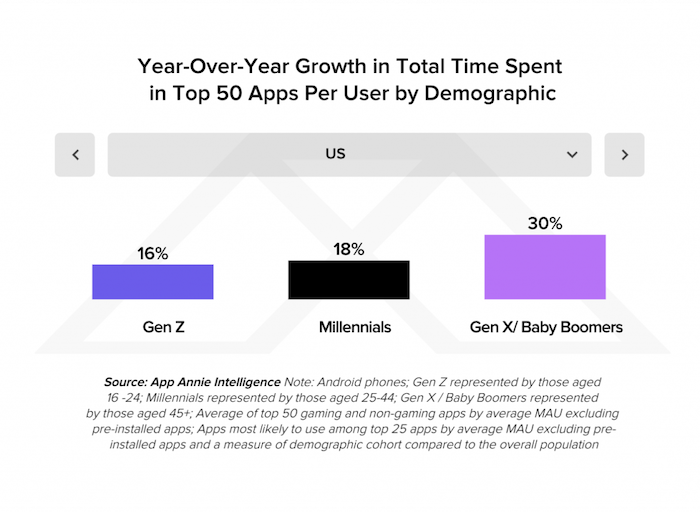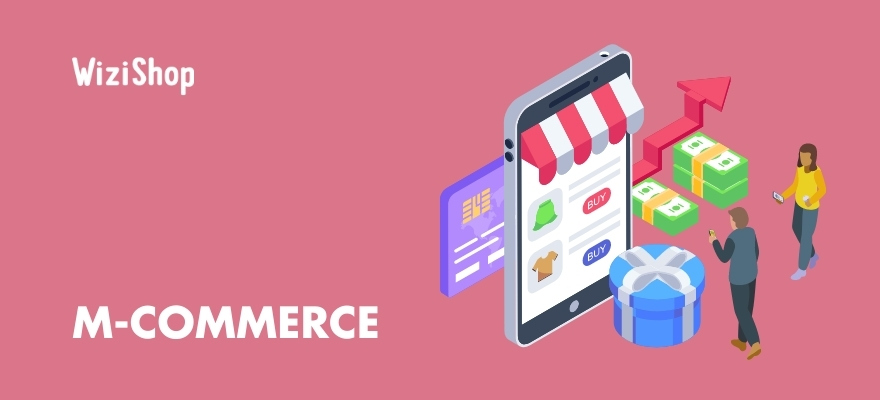It’s no longer just a trend! M-commerce is now a heavyweight in online sales. “M” for “mobile,” m-commerce refers to all electronic commercial transactions made via mobile terminals (smartphones and tablets).
The expansion of the sector is exceptional. It’s no longer just a question of booking train or plane tickets or tickets for shows. Today, ordering on the internet concerns all sectors, all environments, at any moment of the day.
Studies have been conducted for years to examine the marketing developments and purchasing reflexes of m-commerce. All online stores should be aware of the key figures of the ecommerce trends on phones and tablets, which are about to dethrone desktop ecommerce.
What are the characteristics of m-commerce and how do you transform your customer experience dedicated to mobile devices? We tell you everything!
Definition and advantages of m-commerce
Difference between ecommerce and m-commerce
Ecommerce defines all commercial transactions made on the web. M-commerce, on the other hand, includes only the sales made on a phone or a tablet, on sites or on application. M-commerce is therefore a subcategory of ecommerce.
The term “m-commerce” was coined around 2012, when wireless and connected technologies expanded rapidly. In addition, the arrival of 3G in many territories has intensified electronic activities, including the internet shopping experience via smartphones and tablets.
The share of product or service purchased via mobile methods has become significant in marketing practices due to the many advantages of mobile commerce. Thanks to technology, everything is made easier to speed up and simplify the buying process. Loyalty cards, online payment methods, contact information... All customer data is recorded on the devices connected directly to the sites, far from the waiting line at the physical checkout.
M-commerce statistics for 2021
According to Statista, m-commerce is becoming increasingly important for web sales around the world. In fact, the site notes that m-commerce sales were expected to reach 3.56 billion U.S. dollars by the end of 2021.
In addition, based on data from 99firms, m-commerce made up half of all online sales worldwide in 2021. What’s more, Statista states that in the US alone, the number of shoppers who purchased a product on the web via a mobile device daily or weekly doubled from 2019 to 2021.
Before looking at the health of mobile commerce sites today, let’s now look at the challenges of these practices and the work needed by e-retailers to attract more and more customers on the mobile interface of their web store. Success in online sales is within reach!
Marketing issues and new practices: what do m-commerce consumers expect?
In a recent study by Heady, it was discovered that 57% of the 400 shoppers surveyed found mobile applications to be superior in terms of shopping convenience compared to other channels. Furthermore, according to Business of Apps, ecommerce app sessions have seen an increase of 92% from 2017 to 2021.

Source: Business of Apps
These new uses are accompanied by new requirements from the shoppers’ side. First of all, to be able to attract buyers, you need to have a site design focused on a “mobile-first” strategy: your store’s web pages must adapt to all screens, phones, and tablets in priority.
Then, you have to make the navigation as fluid as possible and clean up your site: avoid adding too much information so as to ensure that your products and services take the spotlight. In addition, it’s necessary to avoid optional steps that can have a negative effect on your business and on your profits.
It’ll be preferable not to make shoppers create an account on your site to be able to make a purchase; visitors may otherwise decide to abandon their shopping carts and turn to a more fluid shopping experience on another online store.
Finally, digital security is essential for m-commerce but also for any ecommerce strategy in general. Protecting data and giving the consumer the power to choose their credentials and the way they want to visit your site should be at the center of your concerns.
Fast check-out, responsive design, support of several payment and delivery options by your company, advantageous prices, enhanced brands and brand image... The customer experience is the main lever of m-commerce and why it attracts more and more users.
For all these reasons, at WiziShop, we’ve thought about your efficiency as an online merchant, but also about the security of your customers. By choosing WiziShop, you choose a solution adapted to any and all screens. All of our designs are responsive, and you have the option to integrate, natively, the AMP system on your category pages, product pages, and blog.
Try WiziShop free for 7 days
THE EASIEST NO-CODE ECOMMERCE SOLUTION✅ No credit card required
✅ Access to all features
✅ No commitment
How does m-commerce work around the world?
Share of buyers on mobile devices
The year 2020 was marked by an unprecedented health crisis, bringing with it forced closures for merchants and unprecedented lockdowns. In this context, ecommerce sites became (and in many cases, continue to be) the primary means of sourcing in many markets.
App Annie, a global reference on the mobile application market, reveals the figures that made the year 2020 in terms of mobile transactions in its report “The State of Mobile 2021.” The troubled context has led to an explosion of the mobile application market: in 12 months, expansion was as strong as in a period of 2 or 3 years.
The key figures provided in the study are all up sharply: spending on store applications has reached $143 billion, up 20% over one year. At the app level, 218 billion new apps were downloaded, a 7% increase over the year.
Average shopping cart and frequency of purchases on mobile
According to a study conducted by PayPlug, the average shopping cart has evolved. On smartphones and tablets, it has gone from €60 in 2015 to €69 in 2020.
Furthermore, PayPlug announced that mobile devices are preferred for weekend buys rather than weekdays. Although this practice is taking hold and, according to the study, our use has reached maturity because we use our mobile all day, this type of transaction is mainly chosen for purchases of less than €75.
The most popular sectors online
Contentsquare released a study conducted over 12 months in 10 different countries through 7 billion sessions on 400 sales portals. This report shows the most preferred sectors on mobile: luxury, fashion, and cosmetics.
Just after these markets, we find retail (57%), automotive (57%), and home/high tech (56%). According to Contentsquare, online sales via mobile represent 67.2%. However, the conversion rate on mobile does not exceed that of fixed terminals at the moment.
Spending on PCs vs. spending on mobile devices
Based on data from Contentsquare, mobile conversion rates remain well below those of desktop computers: 3.20% vs. 1.58% on mobile for fashion, 3.09% vs. 1.57% for cosmetics, and all other sectors are also affected by these differences.
The only exception is luxury: 1.06% against 0.97% on mobile, a balance almost found.
Contentsquare tells us in its study that 53% of users will leave an interface that takes more than 3 seconds to load. Sales are boosted by 150% when visitors go through the portal’s search engine. A good reason to take care of your SEO and to focus on SEA…
The profile of mobile users
The year 2020 left its mark on users in terms of their screen usage. According to App Annie, there was a 20% increase between 2019 and 2020 in time spent on mobile devices in 2020. Lockdowns drove users to escape to the internet during this uncertain period.
Though pandemic restrictions have been lifted in many areas around the world today, mobile usage is still significant. In 2021, no less than 3.8 trillion hours were spent on the phone!
Furthermore, regarding time spent on mobile devices on a daily basis, the average person uses their smartphone for approximately 4.8 hours each day, representing a 30% increase in a 2-year period.

Source: App Annie via Venture Beat
And this trend affects all generations! According to the State of Mobile 2021 report by App Annie, in the US, year-over-year growth for time spent on mobile devices in 2020 was the highest for baby boomers and Generation X at 30%, followed by 18% for millennials and 16% for Generation Z.

Source: App Annie via Derived from Data News
More and more connected and mobile devices in our daily lives
According to App Annie's State of Mobile 2020 report, there will be 25.2 billion connected devices in 2025, an increase of 177% compared to 2018.
In the global population, the most connected age groups are first of all the youngest, born between 1997 and 2012, the generation Z, who are 98% to own a smartphone, that is 60% more than the previous generation. This segment of the population represents the active consumers on mobile of tomorrow, future ecommerce buyers that should be followed closely from today...
M-commerce forecasts on the rise
It’s highly likely that ecommerce growth is only going to continue, in part due to the increasing use of mobile accessories for shopping on the web.
Statista notes that in 2021, global ecommerce sales reached $4.9 trillion. App Annie predicts that m-shopping, aided by platforms like Pinterest and Instagram, is expected to be worth nearly $2 trillion, or $2 trillion by 2024.
Social commerce is also a trend to watch, a category of ecommerce but also, at times, a subcategory of m-commerce if the purchasing occurs on social networks on mobile devices.
What is certain is that the loss of speed of the uses on fixed terminals such as desktop computers is announced because all the evidence is there to predict a surge of m-commerce as the main commercial channel.
With WiziShop, all market evolutions are analyzed in real time to allow stores to adapt to the sector's movements. What are you waiting for to jump on the bandwagon and look forward to your future mobile success?
Try WiziShop free for 7 days
THE EASIEST NO-CODE ECOMMERCE SOLUTION✅ No credit card required
✅ Access to all features
✅ No commitment










